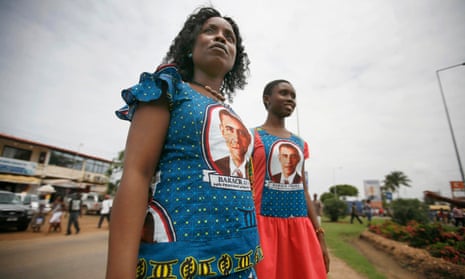Nearly eight years ago, Barack Obama stepped into the White House, promising to elevate US development efforts to unprecedented heights.
This week, with just months of his term left, President Obama will host the first White House summit on global development. It will give him a chance to analyse progress, including his signature initiatives such as Feed the Future and Power Africa. But how will history judge Obama’s legacy on the advancement of women and girls within his global development agenda?
Under Obama, US foreign policy and assistance has intentionally sought to bring women and girls from the margins of society to the centre of development efforts. This administration can claim many victories in this regard. It revived a White House council on women and girls – with representatives from each department and major agency within the administration – and appointed a global ambassador to champion women’s rights. It penned strategies to protect women from violence or, better still, prevent violence in the first place; to ensure women’s rights are not traded away at peace talks; and to educate and empower girls, ending harmful practices such as child marriage and female genital mutilation.
As we look ahead to the next administration, will these efforts become engrained in US foreign policy, or will they be a forgotten footnote of Obama’s presidency?
The global development summit on Wednesday provides a moment to take stock of success and continue our commitments to navigating the global forces that are transforming our world.
The first of these is climate change. As average global temperatures rise, increasing droughts and floods are putting pressure on agricultural production. For small-scale producers, many of whom are women, access to market information, as well as financial inclusion, will be increasingly important.
In the home, climate change will put pressure on water supply, requiring women and girls to spend more time collecting water – time that could be otherwise spent on education or income generation or leisure. Climate change programmes that do not specifically address women’s needs or contributions will have limited success – and US climate policy is silent on gender. That will have to change if the US, as a major development actor, is to respond effectively to this global threat and prevent greater environmental damage and social injustice.
The second force is urbanisation, as many parts of the world are experiencing increasing migration from villages to cities. Urbanisation is bringing young women, single and in families, to growing urban centres for employment opportunities. However, these women often live in informal settlements with limited infrastructure – such as water, sewerage, electricity and schools, social services, opportunities for social networking and involvement in local governance. Taken together, this can put women’s health, well-being and safety at risk.
Committing to safe spaces and movement for women and vulnerable populations is rightly included in the UN’s sustainable development goals, and the US has supported UN Women’s Safe Cities initiative to reduce violence in urban settings. The US must prioritise gender-equitable representation in its approach to urban planning or governance. If women were explicitly included in planning housing and local services, how different cities of the future might be.
And finally, conflict and migration. Women in displaced populations – especially adolescent girls – too often lack access to shelter and health services, and are vulnerable to sexual violence and trafficking, on top of violence experienced in conflict. Among the Syrian refugee population, child marriage has increased from 12% to 32% in only three years in neighbouring Jordan.
In Nigeria and Iraq, extremists have taken girls as sexual slaves, and under current interpretation of the Helms amendment, the administration will not authorise safe abortion services for girls and women who have been raped or whose lives are medically in danger. Assessment is needed on how protracted displacement might further contribute to these challenges. What resources are needed to support them and ensure their futures are not lost?
Over his two terms, Obama has taken important steps to integrate gender in his development agenda, and that’s a real accomplishment. There has been an increased understanding that if we are to eradicate poverty, women and girls must be at the centre of our efforts. The summit provides an opportunity to reflect upon the enduring global challenges that lie ahead and how to best prepare for them. The next administration must build on these reforms to ensure an even stronger, more evidence-based and comprehensive approach to ensuring women and girls are full partners in finding solutions to global challenges.
